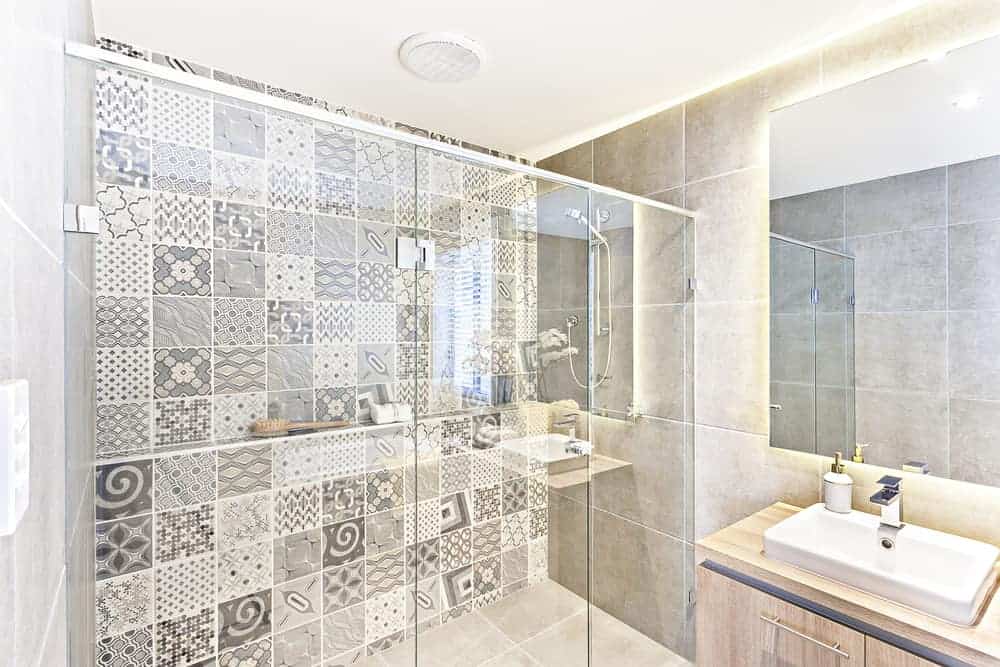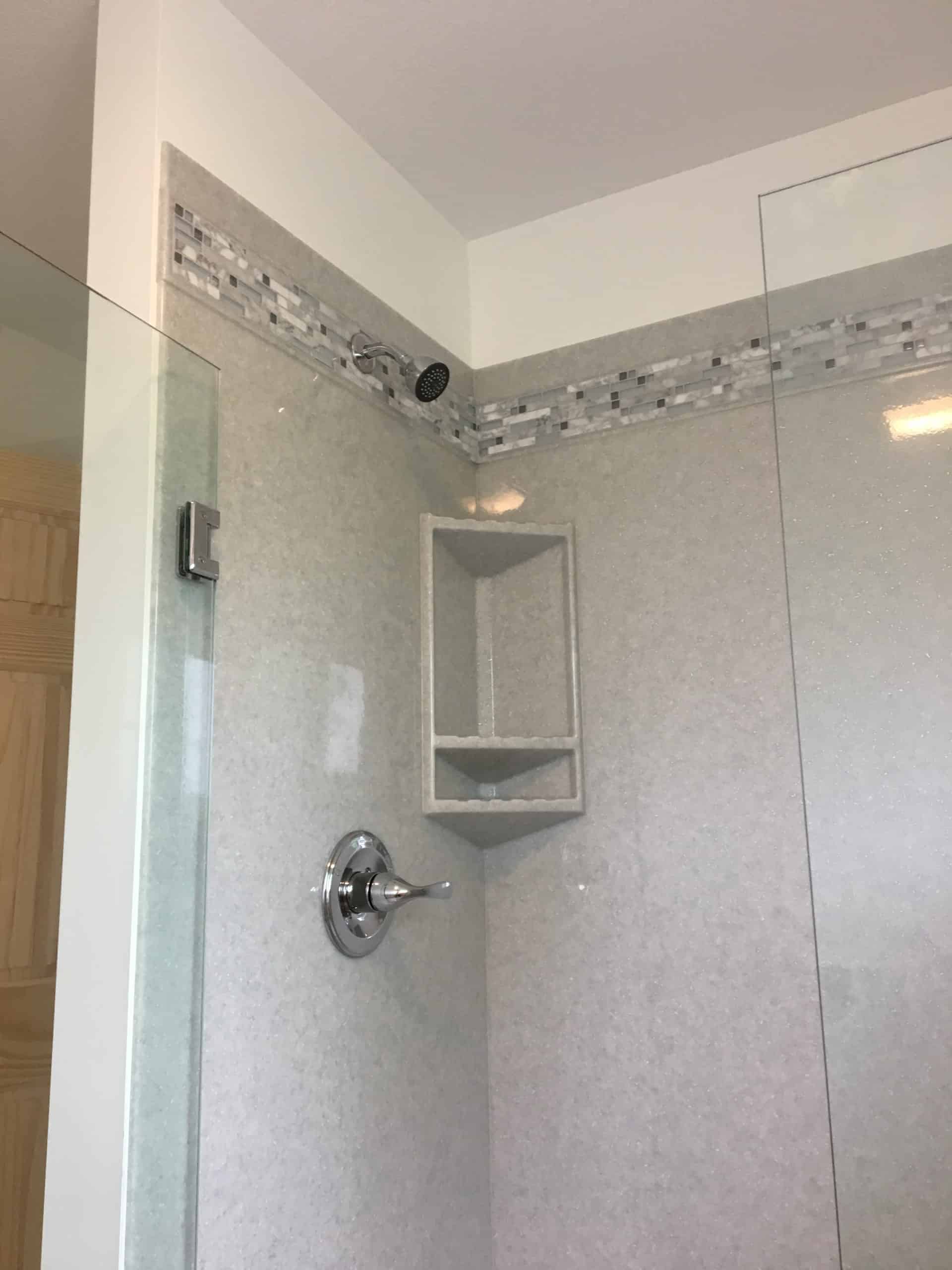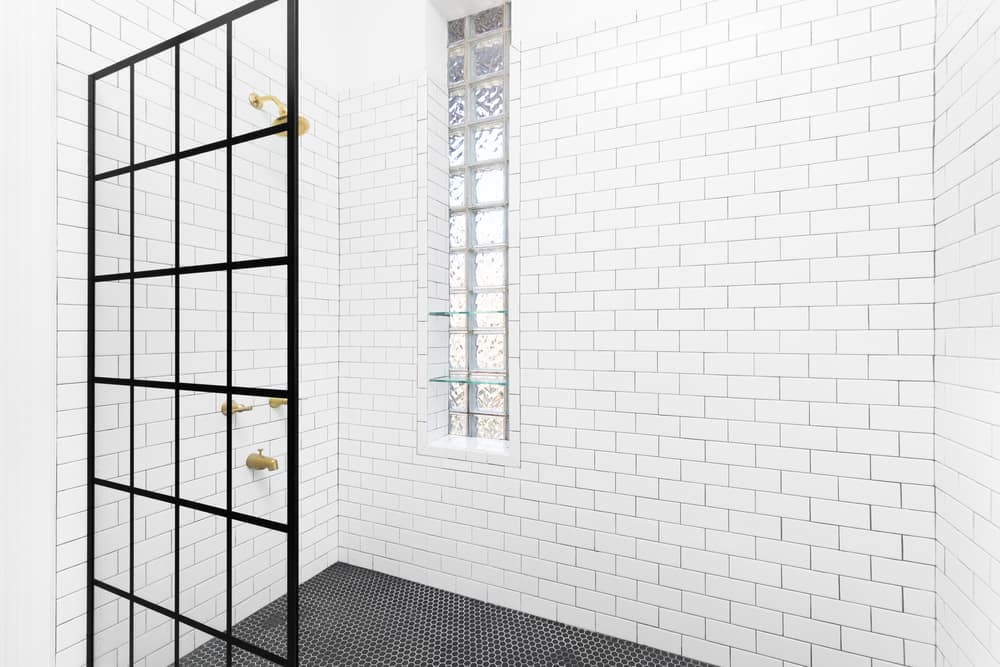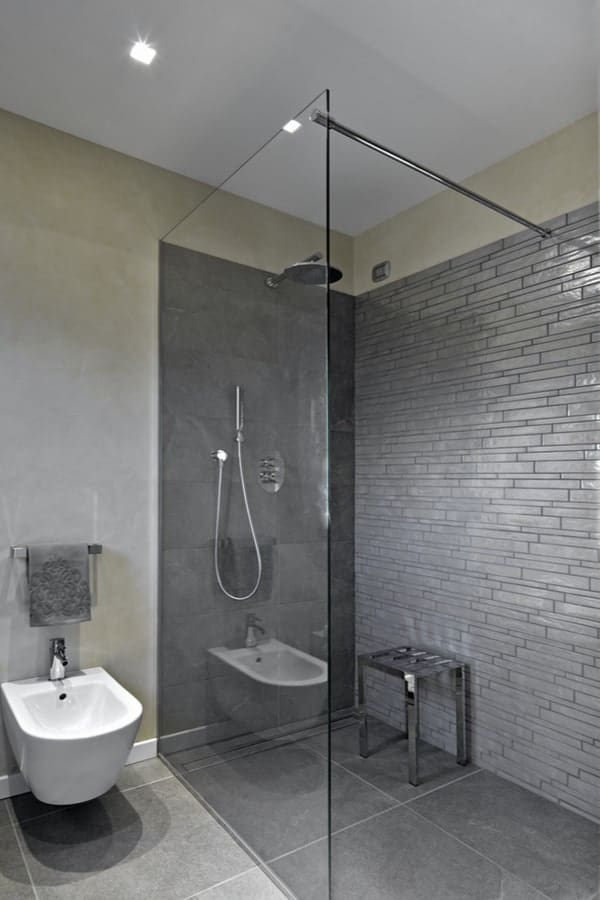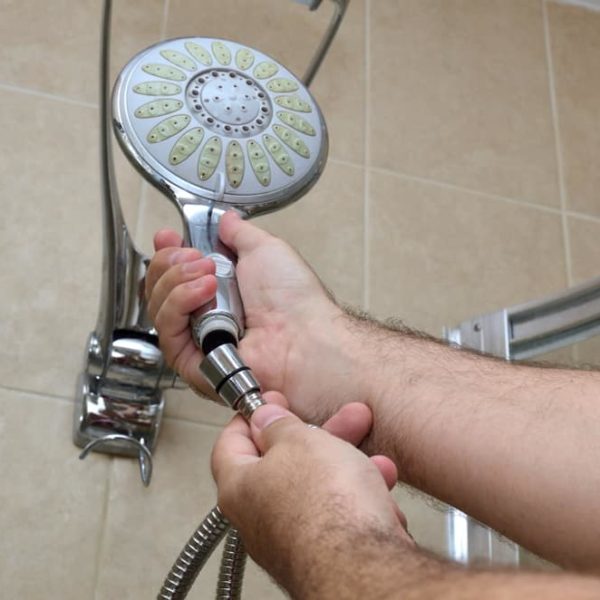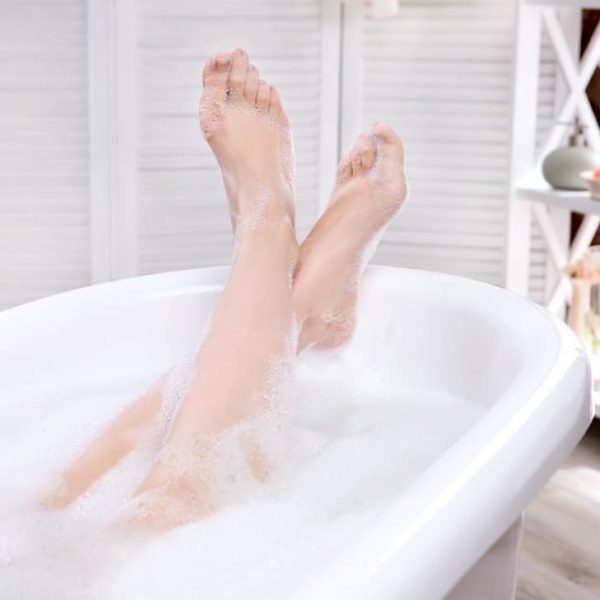if you’re planning a new bathroom or a renovation, getting the wall covering right is key. It’s vital to protecting your drywall from moisture. And it will have a huge impact on the aesthetics of your room.
For a long time, tiles were pretty much the only game in town. But there’s a new kid on the block – wall panels. So which option is better? And what do you need to know to make the right choice for your bathroom?
That’s where we can help! We’re going to look at the case for shower wall panels instead of tiles. And we’ll look at the pros and cons of the different alternatives.
So if you’re ready, step this way to find out more!
What are shower wall panels?
Shower wall panels go by a number of different names, so don’t be confused! If you hear someone talking about shower panels, bathroom wall panels or bathroom cladding, they’re basically the same thing. That’s a large panel which sits on the surface of the wall to act as a barrier to the water.
Shower wall panels are specifically designed to be used inside a shower cubicle. You may want to coordinate the look with matching panels elsewhere in your bathroom. Or you might want to keep it simple, with the shower as a focal point.
As with tiles, panels need to be sealed at the edges to prevent any water getting in.
What are tiles?
We’re guessing you’re pretty familiar with bathroom tiles! They work on exactly the same principle as panels. In other words, they provide a water-resistant layer to protect your walls and inhibit the growth of mold and mildew.
Tiles can vary widely in both size and shape, from tiny mosaic squares to large brick shapes. In all cases, though, they’re much smaller than panels. They can be made from a number of different materials including ceramic, porcelain, stone and glass.
So now we’re clear about what we mean by shower wall panels and tiles, let’s see how the two compare.
Shower Wall Panels vs. Tiles – Installation
When it comes to the ease of installing your wall covering, wall panels and tiles are poles apart. And wall panels win hands down.
If you’ve ever tiled anything, you’ll know it can be a time-consuming and messy business. There’s gloopy grout to get all over your hands and clothes. And those fiddly little tile spacers are a pain to get into position.
If you’ve got a large wall to cover, tiling can take many hours of work. And if you’re replacing old tiles, you’ll have to spend even longer removing them before you can get started. You may also damage the drywall in the process, giving you even more work to do.
Wall panels, on the other hand, are a whole lot easier to handle. You may only need one panel for each wall of your shower cubicle.
And even if you’re covering a bigger area, fitting together two panels is pretty simple. Many designs feature tongue and groove edges, so they lock together. Others have to be covered with seam covers and sealant. But even then, there’ll be far fewer edges to worry about than with tiles.
And if you’ve already got tiles, you’ll be pleased to hear that most wall panels can be installed over the top. Once they’re in place, no-one will know you didn’t spend hours removing your old tiles. And as long as your walls can handle the weight, they’ll get an extra layer of protection.
When it’s time for a change, removing panels will take less time too. That’s not to say it will be a walk in the park – but compared to tiles, it’s more straightforward. And if you have any tricky shapes to cut, you’ll be able to use your old panel as a template for the new.
All this means that installing shower wall panels is a much faster, and less messy, experience than tiling.
There is, however, one argument in favor of tiles – familiarity. If you’re getting someone in to do the job, any tradesperson worth their salt will have experience in tiling. Shower wall panels, on the other hand, are a much newer product.
Don’t let that put you off. The reality is that installation is much easier. But beware of tradespeople who try to get you to pay a premium to install something “new-fangled”.
Shower Wall Panels vs. Tiles – Maintenance
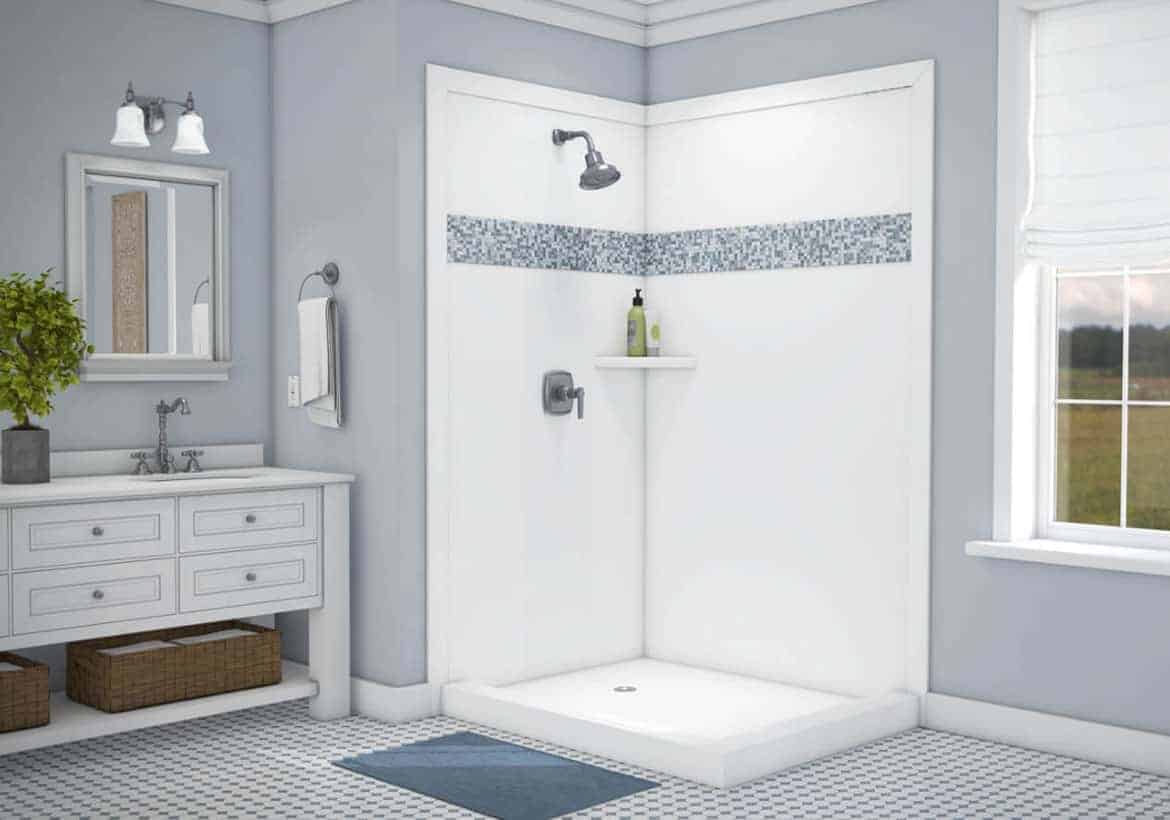
The lack of grout involved in installing shower wall panels is good news when it comes to maintenance.
Anyone’s who’s had tiles for a while will know that keeping the grout clean can be a challenge. Discoloration is a particular issue for areas like showers that get very wet. You may need to use a grout pen to return it to its original shade.
And over time the grout between tiles can wear away. That can lead to loose tiles, as well as providing a haven for mold and mildew.
With a shower wall panel, on the other hand, there’s no grout to worry about. And the surface won’t discolor either.
Just wipe it over once a week to keep it clean. Soapy water works well, or you can use a vinegar solution if you prefer. If you choose vinegar, just test it on an unobtrusive patch first to make sure it doesn’t damage the finish.
When it comes to repairs, however, tiles have the edge over shower wall panels.
Both tiles and wall panels can be damaged if they’re struck with force. And if that happens, the damaged tile or panel will need to be replaced.
With a panel, you’ll need to replace a much bigger area than you would with a tile. That will make it more expensive, as well as more time-consuming.
Shower Wall Panels vs. Tiles – Aesthetics
When it comes to tiles, there’s a huge range of design choices out there. You can choose luxurious natural stone tiles. Or inject pattern and color with ceramic or porcelain versions. And while standard tiles are square, you can also find rectangles, and even funky options like hexagons.
Shower wall panels offer plenty of choices too. You can choose finishes made to look like stone, ones injected with glitter, or a simple acrylic look in different colors. And if you want the appearance of tiles without the hassle, some panels even have fake grout lines.
One thing you won’t get with wall panels, though, is a different feel. Even textured panels will still feel like the material – usually uPVC – they’re made of.
Shower Wall Panels vs. Tiles – Price?
Shower wall panels are often touted as less expensive than tiles. That can be the case, but as with everything, it depends on your choices.
An inexpensive tile can be cheaper overall than a high-end panel. But luxury stone tiles will inevitably be more costly than wall panels.
Draw up a budget before you get started so you can compare costs.
Remember to take account of the size of your shower and the dimensions of the panels or tiles. That way, you’ll know exactly how many you need. (And if you’re tiling, don’t forget to add in an extra 10 percent or so for wastage.)
And make sure you add in the extras too – grout if you’re tiling, plus sealant and any trims you need.
If you’re getting someone to do the installation for you, you’ll also need to budget for labor. Try to get three quotes so you can be confident you’re getting a fair price.
Shower Wall Panels vs. Tiles – Environmental sustainability
As with price, the answer to which option is best for the environment depends on the specific product you choose.
Many shower wall panels are made of uPVC, which is made from petrochemicals. These aren’t a renewable resource, and the manufacturing process produces toxic chemicals.
Some products also emit chemicals known as Volatile Organic Compounds, or VOCs into the air. These can be harmful to human health.
For flooring, the FloorScore system provides independent verification that products are low in VOC emissions. There doesn’t yet seem to be an equivalent for wall panels. Some manufacturers – like DumaWall – do, however, offer assurance that their products emit no VOCs.
With tiles, on the other hand, you can be confident that ceramic, porcelain, glass and stone don’t emit VOCs. But it’s still important to choose a low-VOC tile adhesive and sealant.
Whichever option you choose, look for brands that have strong policies to minimize their environmental impact.
And if you opt for wall panels that include wood fibers, make sure they’re accredited as coming from sustainably managed forests. The Forest Stewardship Council logo on the packaging of products means that the raw materials have come from ethical sources.
So which is better – shower wall panels or tiles?
Should you choose shower wall panels instead of tiles? The answer is – it depends on what you’re looking for!
If easy installation and maintenance is your priority, then yes, shower wall panels will be the better option. But if you put a premium on eco-friendliness, tiles have the edge. Just make sure you look for products from organizations with sound environmental policies.
And when it comes to your interior design scheme, both panels and tiles are available in many different finishes. The sheer range of materials and manufacturers is greater for tiles. But if you want a minimalist look, you can’t beat shower wall panels.
Whichever option you choose, we hope we’ve helped you make the right decision for your home. Enjoy your beautiful new bathroom!
